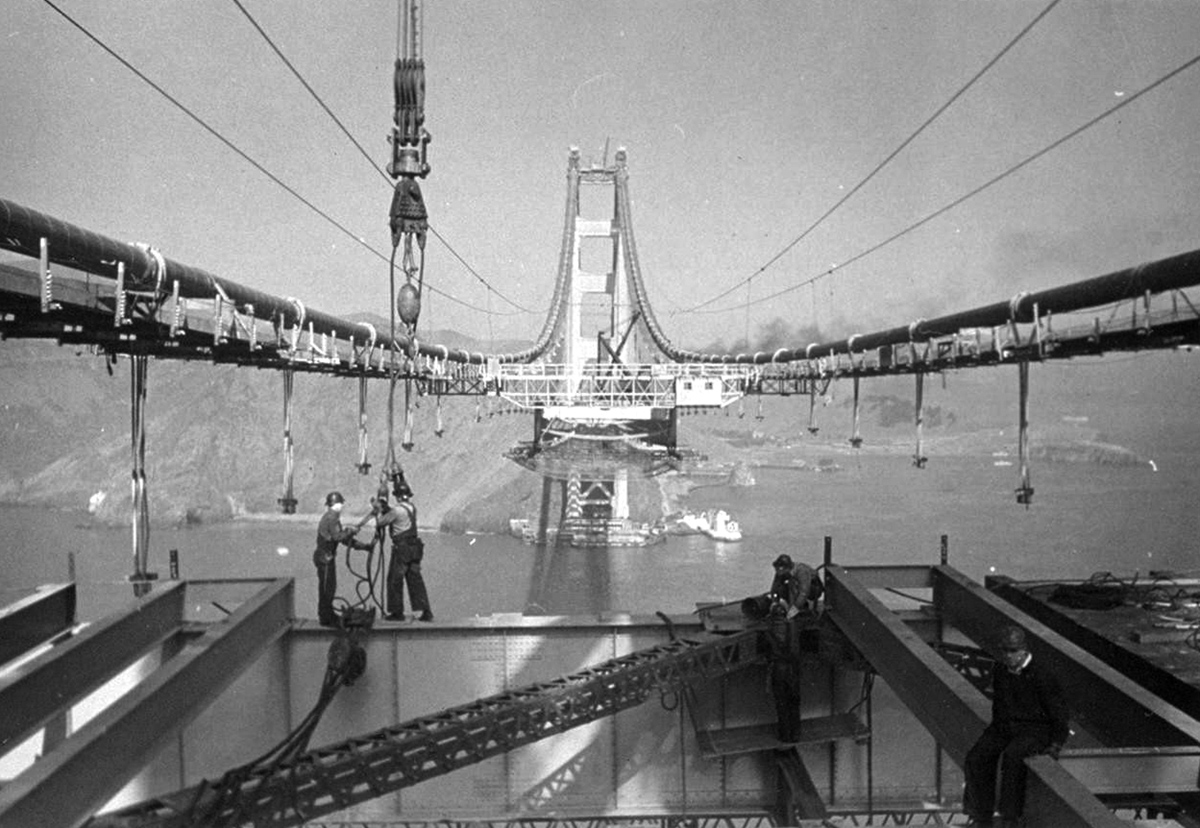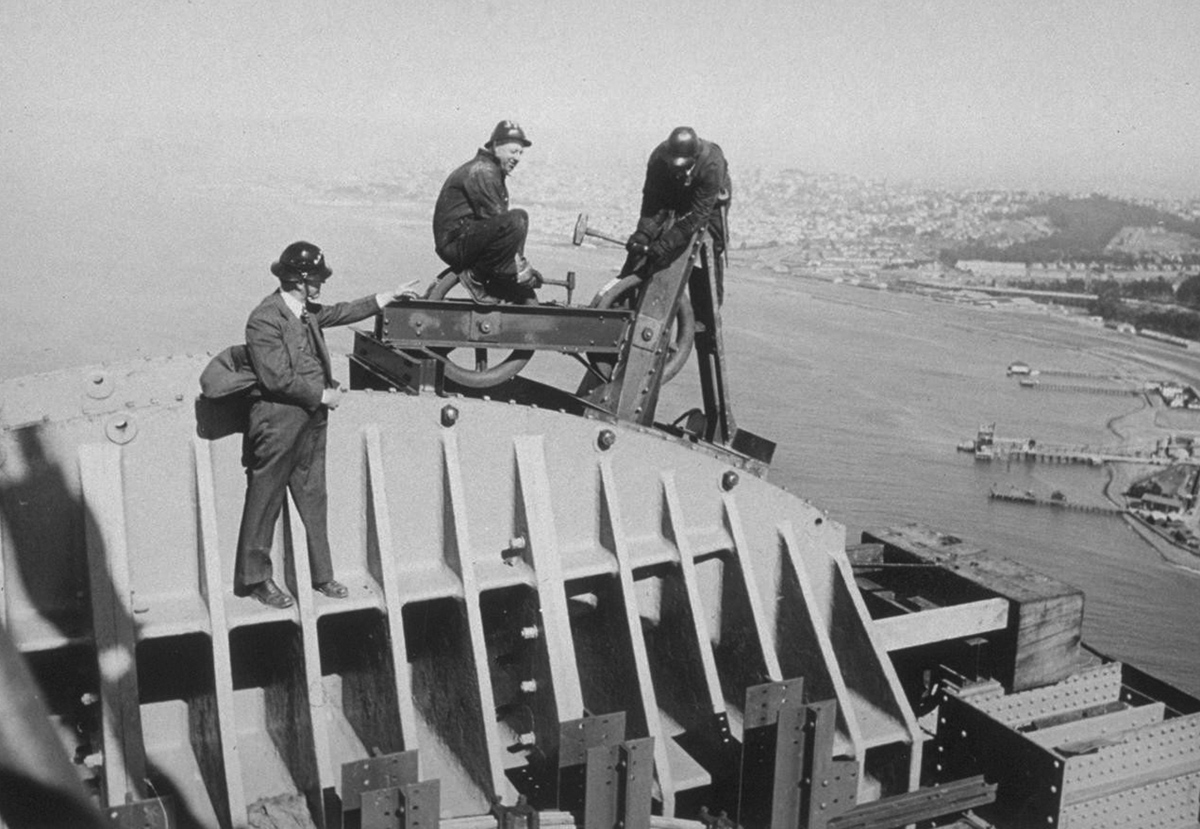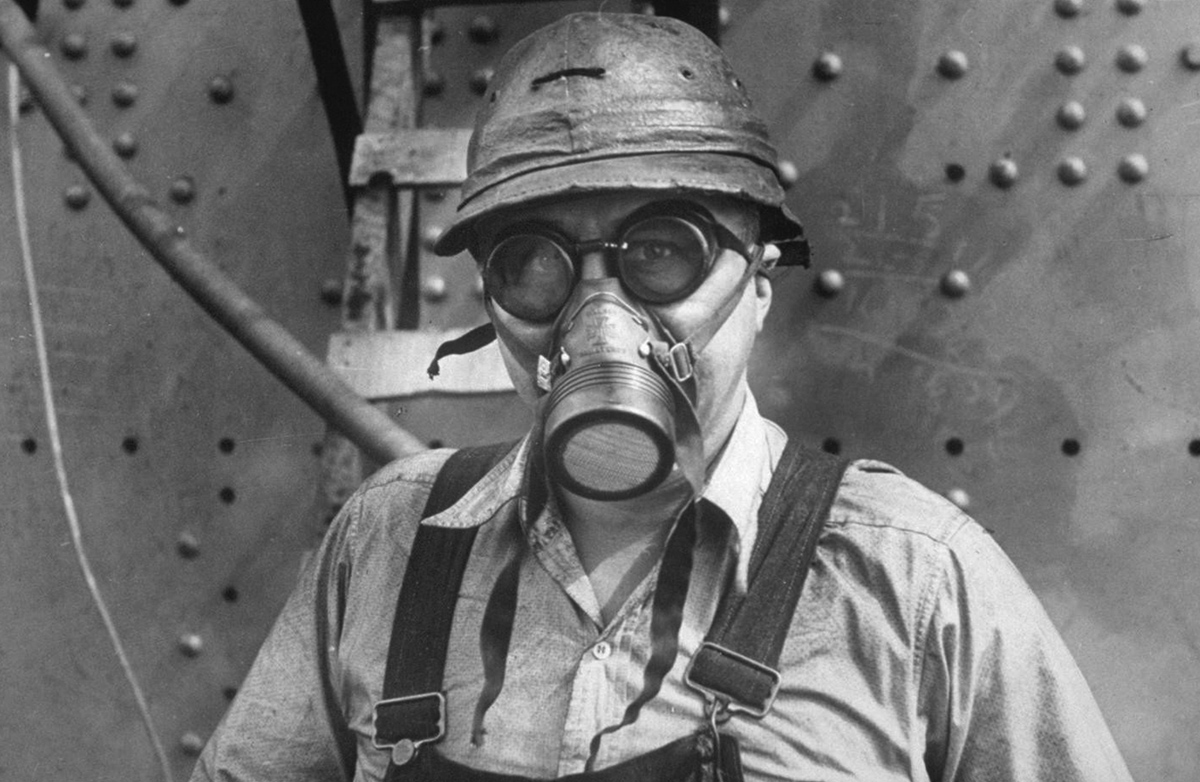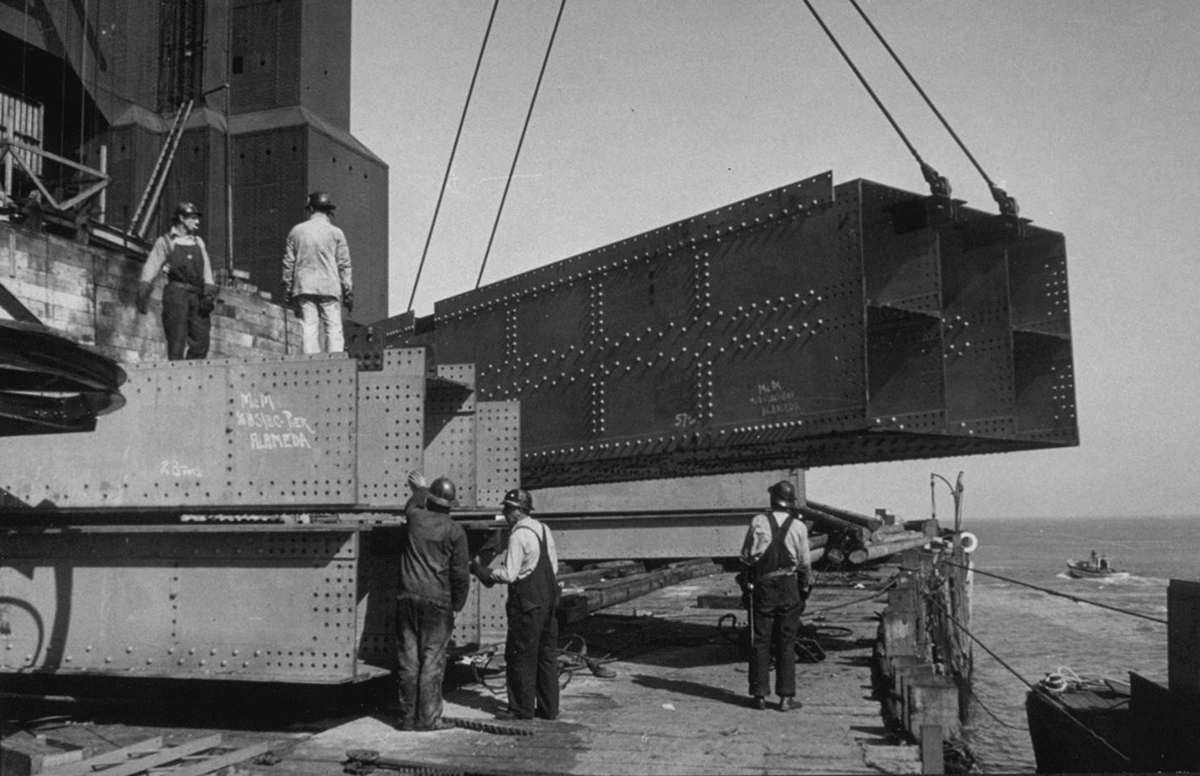
The Golden Gate Bridge is everywhere.
Construction of the iconic structure started on this day — Jan. 5 — in 1933. In the decades since its completion, the bridge has been emblazoned on tote bags, shirts, postcards, and postage stamps; featured in countless shows and movies; name-checked in a Billie Eilish song; and photographed more times than Taylor Swift at a Kansas City Chiefs game. So we understand why it would be all too easy to take the San Francisco symbol for granted.
But these dramatic photographs, held by The Bancroft Library at UC Berkeley, serve as evidence of why you shouldn’t.

The images, hailing from a collection called Construction Photographs of the Golden Gate Bridge, 1933-1934, document the perilous work that transformed the bridge from design to reality.
The Golden Gate Bridge connects San Francisco to Marin County and has a 4,200-foot-long suspension span, which was the longest in the world upon its completion. (It was surpassed in 1964 by New York City’s Verrazzano-Narrows Bridge, which is 60 feet longer, according to the Golden Gate Bridge, Highway and Transportation District.)

Building the bridge was a precarious task despite strict safety measures to protect workers. Conditions could be windy, and workers used a special cream to protect their faces and hands. Diets were designed to combat dizziness. Sauerkraut juice was used to stave off hangovers. (Taking notes?) Workers were outfitted with specially modified mining helmets and no-glare goggles, and riveters used respirator masks to guard against lead inhalation.
Although a safety net below the bridge saved the lives of 19 men, 11 workers died during construction — including 10 men on a single day, after a scaffold tore through the net. A plaque at the south entrance to the west sidewalk is displayed in remembrance of the lives lost.

The bridge wouldn’t be possible without the ingenuity of UC Berkeley alums: Irving Morrow and his wife, Gertrude Comfort Morrow — both architects — are responsible for much of the bridge’s look and feel, including the art deco towers, dramatic lighting design, and toll plaza, according to Docomomo US, a nonprofit focused on design and architecture. Irving Morrow championed painting the bridge its striking “international orange” color. “The Golden Gate Bridge is one of the greatest monuments of all time. … What has been thus played up in form should not be let down in color,” he wrote in a report advocating for the unconventional hue. The Morrows’ papers are held in UC Berkeley’s Environmental Design Archives.
Upon the bridge’s opening in 1937, the San Francisco Chronicle dubbed it a “thirty-five million dollar steel harp!” (The bridge would cost $1.64 billion to construct in 2019 dollars, according to the Golden Gate Bridge, Highway and Transportation District.)
So the next time you see those titanic towers piercing through a pillowy bed of fog (that’s Karl to you), we hope you’ll pause for a moment to appreciate the immense work — and ambition — that was welded into the world-famous bridge.